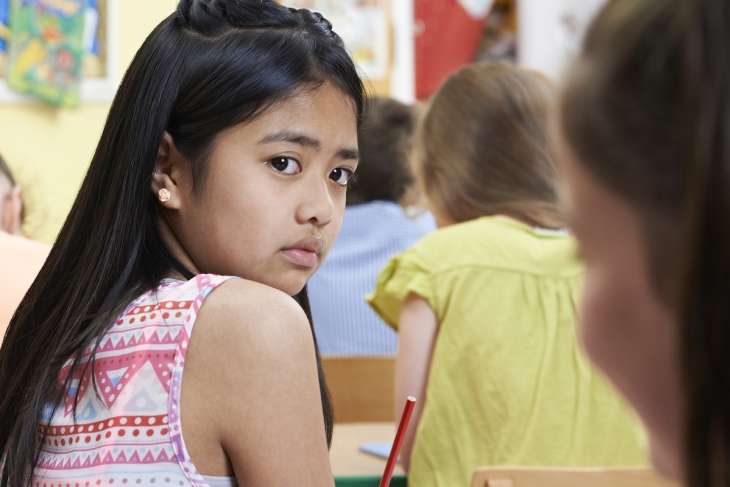When schools went online at the beginning of the pandemic, it was unclear how the sudden and disruptive shift would impact student behavior. Would cyberbullying, for example, increase with students spending more time on their devices? And would time away from other students increase bullying when students returned to buildings? A new study investigates how Covid-19 has impacted these issues.
Boston University’s Andrew Bacher-Hicks and colleagues found that Google-trend state-level data on bullying-related searches—in particular, “School Bullying,” “Cyberbullying,” and “Bullying”—were strongly correlated with the amount of bullying that schools actually report. So to examine how Covid-related shifts to remote learning affected rates of bullying, the analysts examined how those Google-search trends changed across states during the pandemic. They did this in two ways: on a month-to-month basis from March 2020–May 2020, June 2020–August 2020, and September 2020–February 2021; and by looking at how the trends changed depending on the proportions of a state’s schools whose instruction, from September 2020 through February 2021, was in-person, hybrid, or remote. These instructional data came from Burbio’s K–12 School Opening Tracker.
They found that searches for “school bullying,” “bullying,” and “cyberbullying” dropped by an average of 27 percent during the pandemic months of March 2020 to February 2021. And that impact became larger over time, with the greatest drop being from September 2020 to February 2021 at 36 percent.
As for instructional methods, the researchers compared the fraction of each instructional mode in a state with that state’s bullying search intensity. This allowed them to examine the rates of bullying-related searches in states with different rates of remote and traditional instructional methods. They found that states with larger fractions of schools operating virtually had significantly lower search intensity for bullying, whereas states with higher proportions of schools offering in-person instruction had higher search intensities for bullying.
In states where the largest number of schools remained remote between September 2020 and February 2021, all bullying-related searches stayed down 42 percent compared to pre-pandemic levels. Meanwhile, for states with more schools offering in person instruction, the rate of bullying-related searches was only down by 19 percent.
The authors offer multiple factors that may be affecting these results. One is that kids are less likely to be bullied when learning online compared to in person because, well, they’re not in classrooms interacting with the peers who bully them or vice versa. Perhaps in-person schools were also stricter regarding student interactions when the students returned due to efforts to mitigate transmission of the virus. Maybe face-coverings play a role. Maybe, too, does the bonding that results from going through the same difficult experience.
However, this data represents a stark contrast to the reports that have been the focus of many recent news stories. Namely, a significant increase in student misbehavior. An Education Week survey found that two out of three teachers, principals, and district leaders say that students are misbehaving more than they did in the Fall of 2019. And rates of misbehavior are higher in districts that remained remote or hybrid last school year compared to those that offered mostly in person instruction. What could be driving students to act out in class and threaten school violence, but is also keeping them from bullying each other?
It’s unclear what the takeaway of this research should be for schools moving forward. Even though virtual instruction reduces bullying, it also reduces learning and amplifies misbehavior. As mitigation procedures like social distancing and masks phase out, schools need to implement strategies that can outlast the pandemic. Adding more structure to school days could be a step in the right direction. “No excuses” charter schools model how this strategy can produce significant learning gains for certain students. But more research is needed to know that for sure.
SOURCE: Andrew Bacher-Hicks et. al., “The COVID-19 Pandemic Disrupted Both School Bullying and Cyberbullying,” NBER Working Paper #29590 (December 2021).




